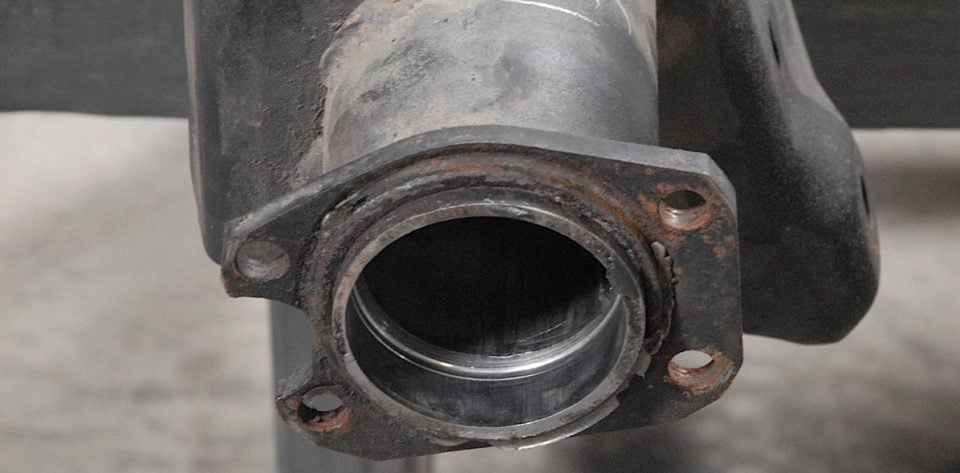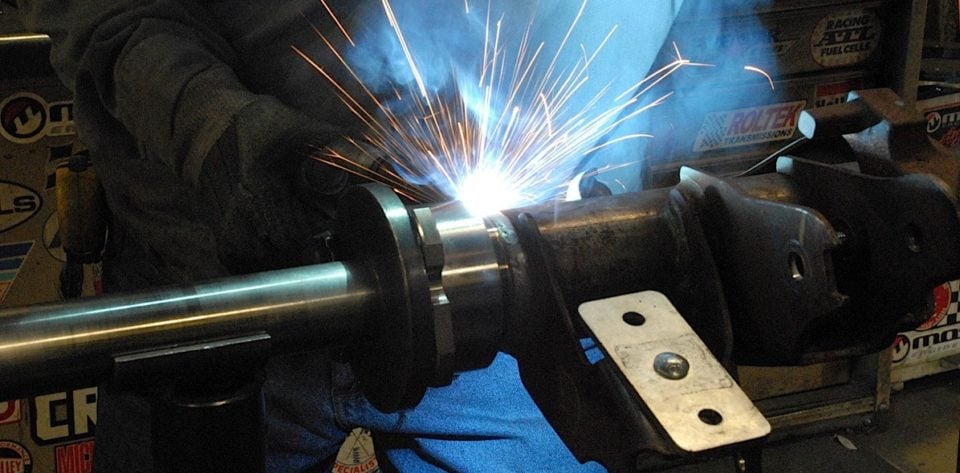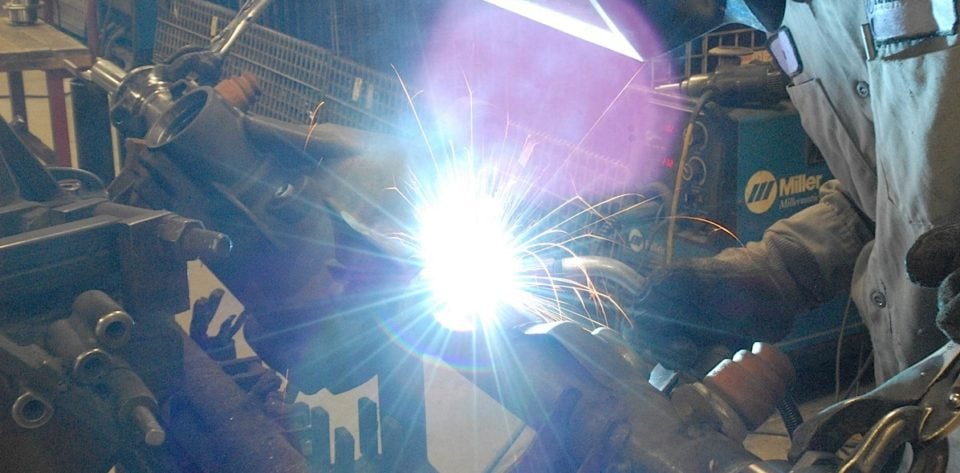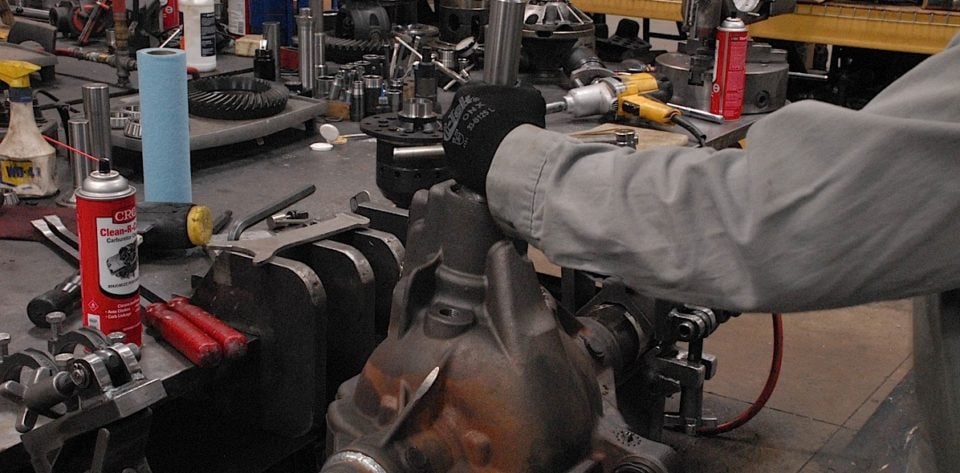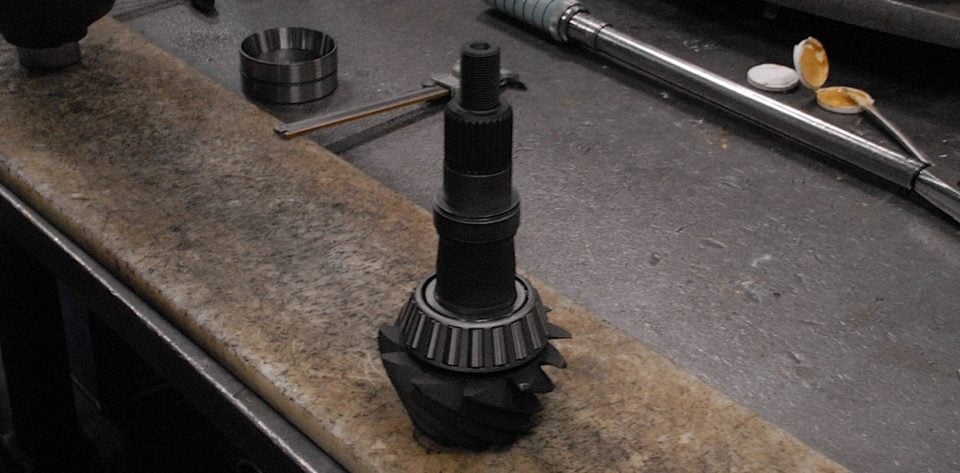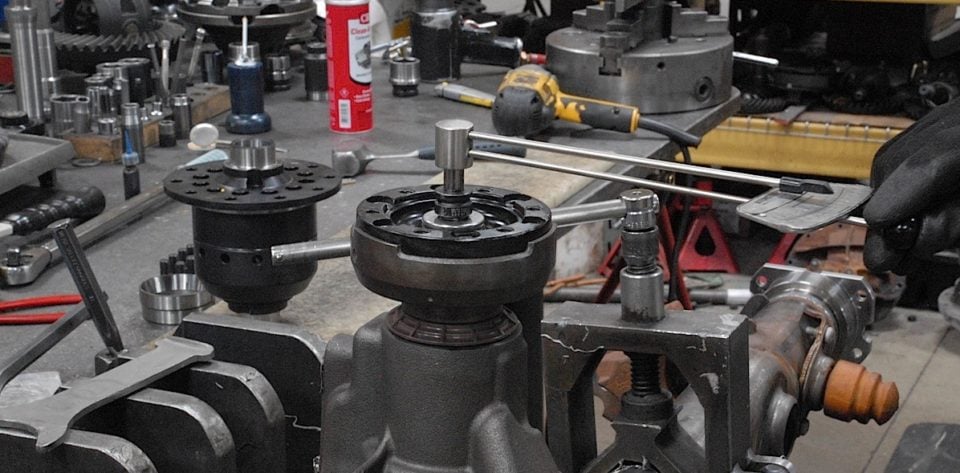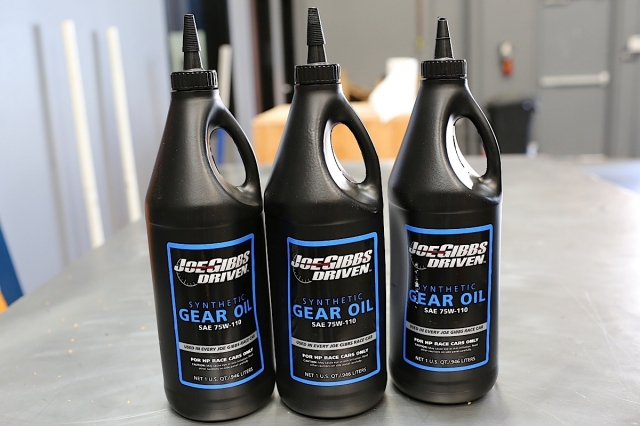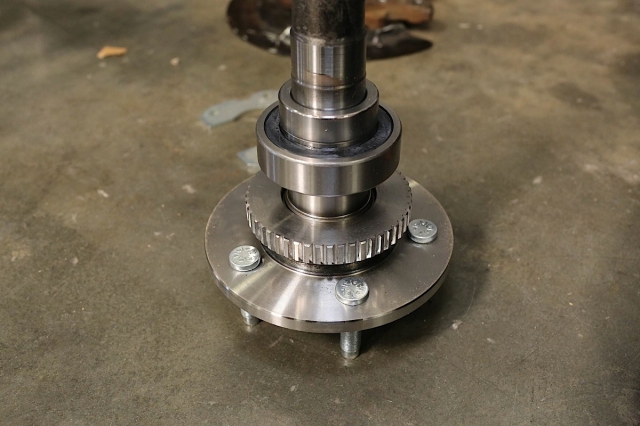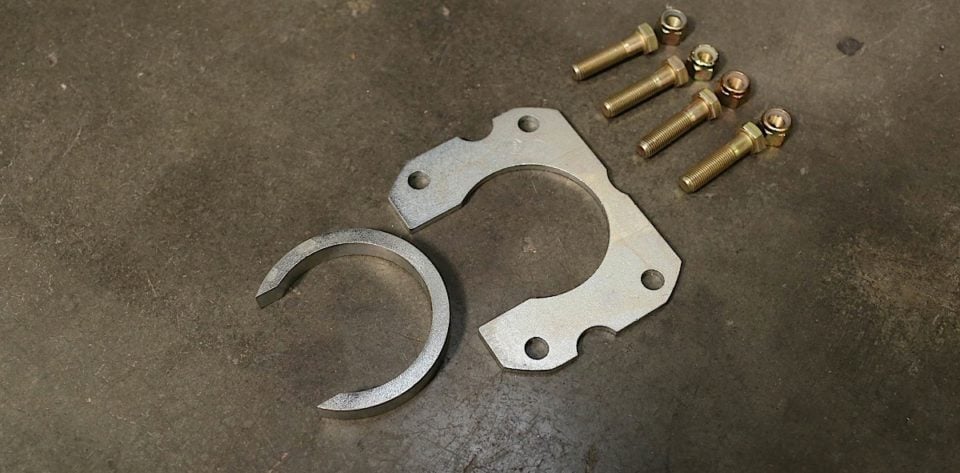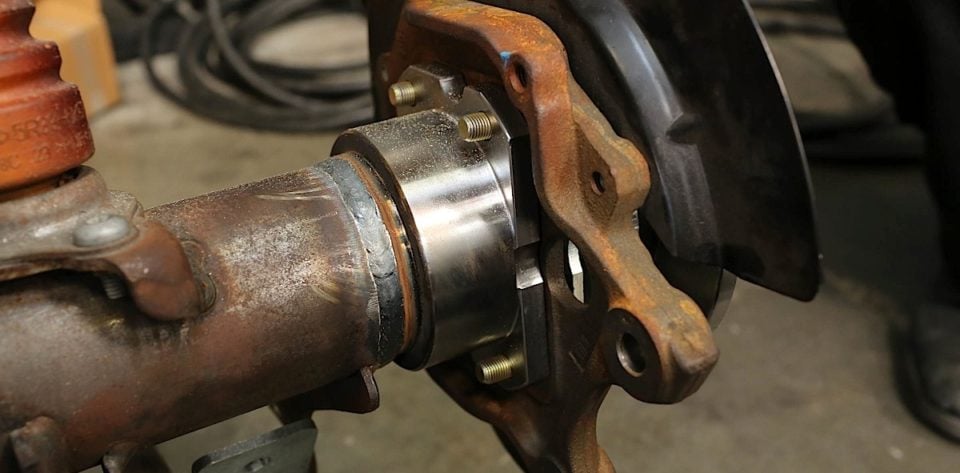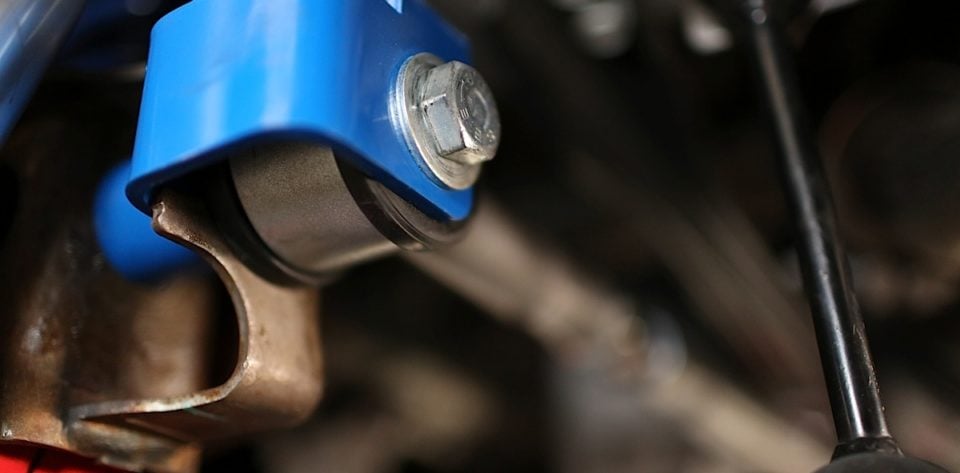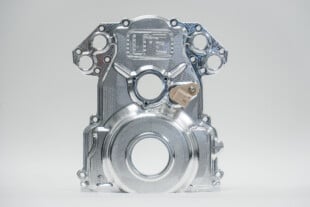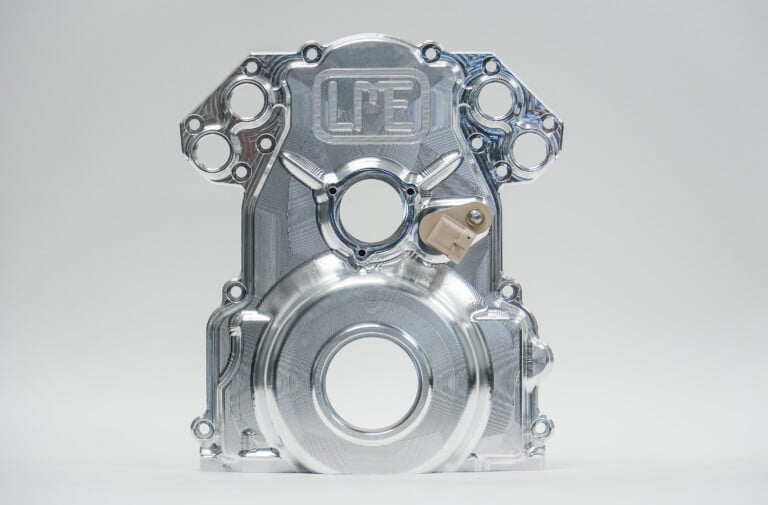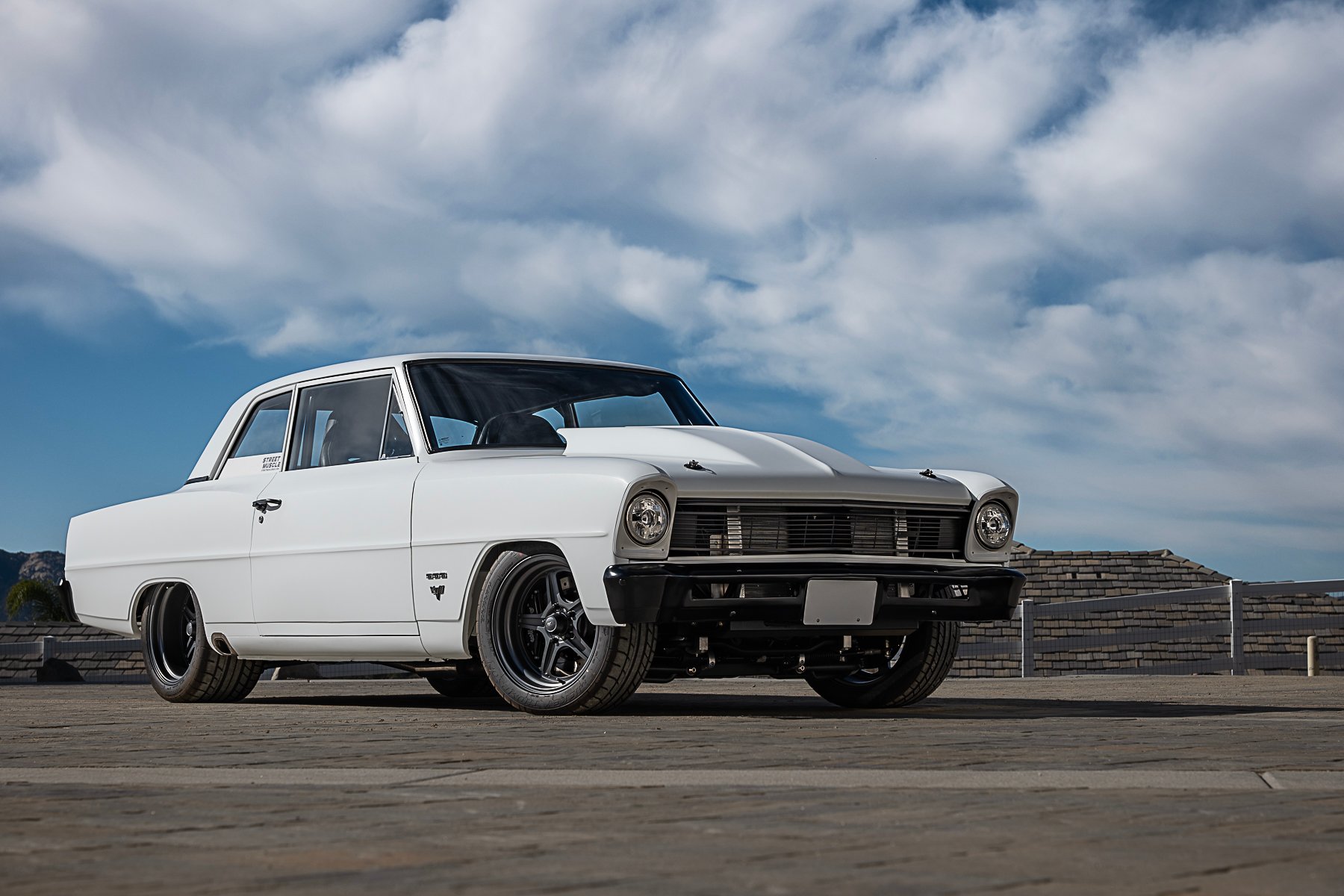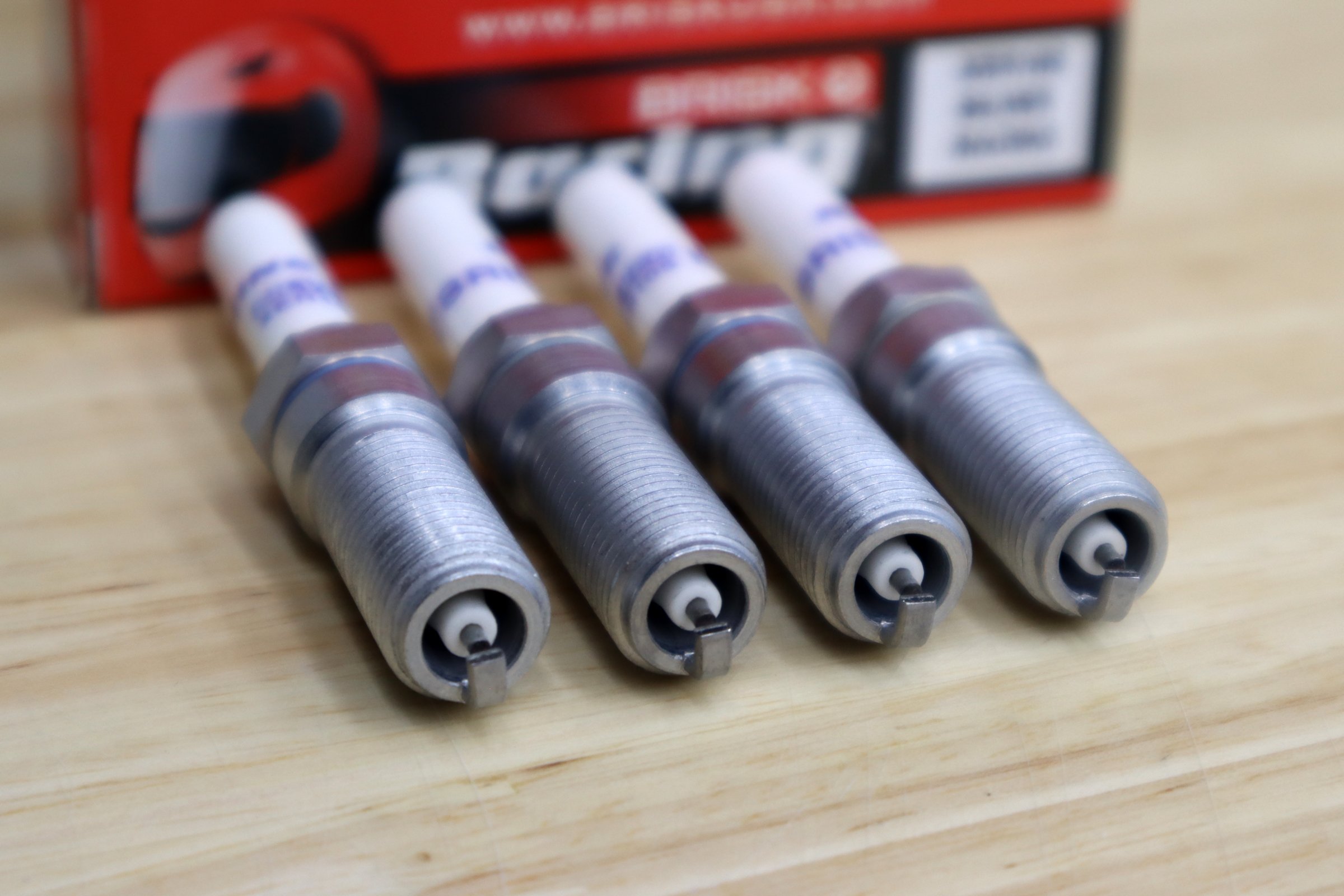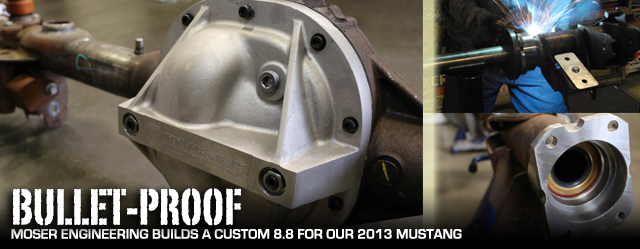
Project Silver Bullet has been shaving time from our dragstrip runs as our efforts to go faster have progressed. We recently took steps to make this car safer and faster on the track, as well as increase horsepower. With these measures taken, we’ve found ourselves at another crossroads, the need to once again upgrade our rear differential.
We were recently reminded by track tech officials that the stock C-clip style axle retention system wasn’t going to cut it now that we’re making regular trips into the 10s. We decided a few upgrades were in order, and for that we went to Moser Engineering for a custom build.
We removed the 8.8 from Silver Bullet and sent it to Moser to have the assembly fully tricked out with some of their most popular pieces. What we ended up with is a nearly bulletproof rearend – capable of taking us deep into nine-second territory safely, but is still friendly enough to drive on the street.
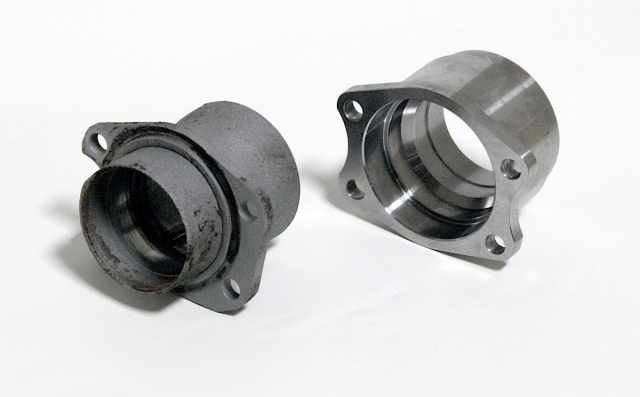
This photo shows the difference between a stock 8.8 C-clip housing end and a new press-on bearing style that we had Moser install.
Housing Updates
With the sticky traction that our new Mickey Thompson Drag Radials provide combined with our 10-second timeslips, we needed to make a few updates to our 8.8-inch housing to handle the power and meet safety regulations. We could have chosen to go with C-clip eliminators however, this could require significant changes to our rear brakes, and is typically not practical for daily drivers. C-clip eliminator systems aren’t recommended for vehicles that see a lot of street miles where the side loading can cause the seal to weep gear oil.
Since we’d rather not deal with cleaning and resealing our axle ends as part of our regular maintenance, we were left with two options. We could swap to a nine-inch housing or have nine-inch housing style ends put on our 8.8. We chose the latter option as it will allow us to retain the less expensive 8.8 housing and parts, as well as allow us to retain our stock braking system.
Left: The stock housing end waits to be removed from the axle tube. Right: With the stock axle housing end cut off and the housing placed in a special jig, the new housing end for the press-on style bearings is carefully welded on.
Moser part number 7705 allows us to replace the stock 8.8 housing ends with a bearing retainer style housing end similar to what is used on a Ford nine-inch housing. This moves the axle retention system to the outside of the axle, required by NHRA when running sticky tires or when ET gets to a certain point. In the event of an axle failure, the axle shaft will stay in the housing and allow the car to come to a safe stop without one of the wheels falling off. Since this system is welded on and uses an actual inner axle seal rather than simply silicone around the face of a C-clip eliminator, the seal should perform like it’s OEM. This will allow us to easily drive to and from the track, as well as commute daily in Silver Bullet without the worries of a gear oil leak.
If a stock C-clip axle breaks then you can have a very dangerous situation occur where loss of control is pretty much a given. -Jeff Anderson, Moser Engineering
Installing these new axle ends requires significantly more labor than the typical C-clip eliminator install. The process requires the rear differential to be removed from our car, completely disassembled, and cleaned. Then the original housing ends have to be carefully cut off, and new ones welded onto the housing using a special jig. With the housing clamped into a jig, a tube is inserted into the axle tube to help square the new housing ends. Failure to weld this correctly will result in misalignment of the axle shaft, which could result at the very least in a bad vibration, and stress on the axle shafts, which could contribute to their failure due to bending and misalignment.
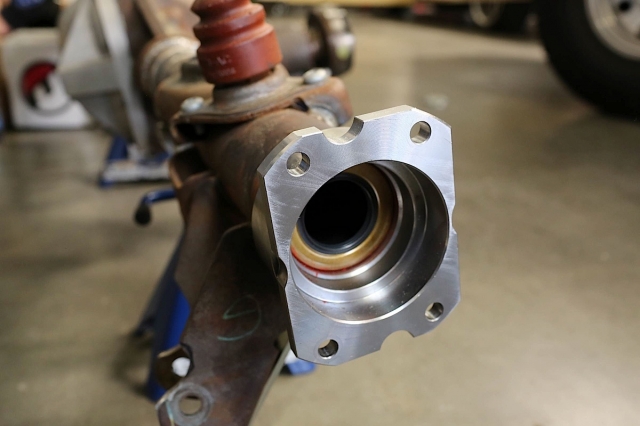
The new housing end after installation on our 8.8. Notice how this end features a place for the pressed on axle bearing to ride.
Weld It Up
While our housing was in the jig, we also had the team at Moser weld up the axle tubes where they meet the differential’s center section. This is an extra measure of caution we’re taking for our high horsepower, street/strip car.
From the factory, the axle tubes are pressed into the housing and welded in place using a type of plug-weld system. This is typically fine for most cars that don’t make a lot of power or spend a lot of time at the track. Over time, the stress from a high horsepower application and frequent sticky-tire launches can fatigue the factory plug-weld. If and when that factory weld fails the axle tube can either twist in the housing, separate from the housing, or both. If the tube were to fail at the housing, the axle shaft could come out with it. “Welding the tubes to the cast center is common on the factory housings to prevent rotation of the tubes in high rpm launches,” says Anderson.
Left: A Moser technician carefully welds our axle tubes to the cast housing. Right: The finished product is a clean, even weld.
Welding the axle tubes in place requires some skill and patience. The center section of the housing is made of cast steel, and therefore thicker, and a different material than the axle tubes themselves. According to Anderson, “Whenever you weld two different materials like steel tubing and cast steel it can be tricky. It typically requires a stick welding procedure using a special rod made to help blend the two different materials together. You also have to be careful of the heat being put in so not to make it brittle or on the other end not hot enough to get proper depth and penetration. It is something best left to those with experience.”
Making Waves
The Wavetrac is a really big jump forward in posi technology. -Jeff Anderson, Moser Engineering
The Wavetrac is different than many other differentials as it is designed to direct power to the wheel with the most traction when a loss of traction occurs. This is done through the use of wave profiles that climb each other as one wheel spins, creating the necessary load inside the differential to keep power directed at the wheel with better traction.
Top Row: Left and Center Left: New inner and outer pinion bearing races are installed as well as a new pinion seal. Center Right: The pinion after its new bearing has been pressed on. Right: Pinion bearing pre-load is checked using an inch-pound torque wrench. Bottom Row: Left: Our Wavetrac differential with the ring gear and new carrier bearings pressed on. Center Left: The differential assembly is set in place. Center Right: Backlash is checked using a dial gauge to measure the movement of the ring gear in relation to its contact with the pinion gear. Right: Finally, pinion gear depth is checked using marking compound to ensure proper gear mesh between the ring and pinion gears.
The Wavetrac has no clutches, frictions, or springs to wear out, and is also designed to stay constantly engaged. What this means is that during a no load situation, such as the fraction of a second between gear changes, or at the moment of launch there’s no delay of the differential locking and unlocking. That in turn means there’s no delay getting traction off the starting line, getting traction down the track faster, and consistently keeping power transmitted to our rear tires.
Constructed with a forged steel housing and 9310 steel gears, the Wavetrac should be tough enough for our most brutal track sessions, but well mannered enough to cruise around town and take to the office. With no wear parts, it also means that other than regular gear oil changes for maintenance, we’ll never have to service this differential, or put special additives in the case.
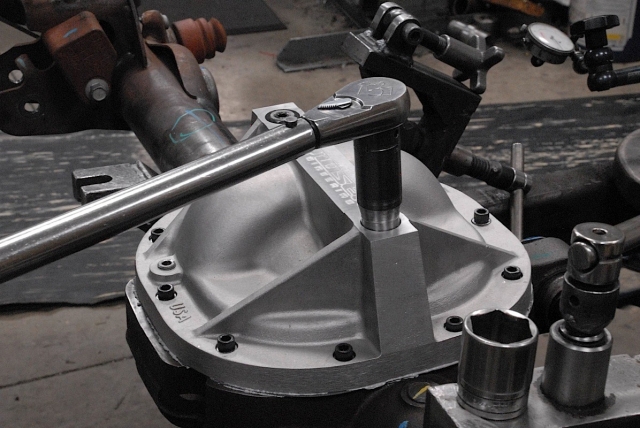
The final task Moser performed was installing the rear differential girdle and torquing the bearing cap supports.
Gear Selection
Gear Oil
Keeping everything happily lubricated on the street and strip in our newly upgraded Moser 8.8 is Driven Racing Oil 75w110 rear gear oil. This gear oil has been shown in testing to reduce rear differential temperatures by as much as 15° F. Utilized in short track, road course, or street applications, the high-tech synthetic gear oil offers incredible viscosity and shear stability. This makes it ideal for our street/strip, daily driver application.
The team at Moser handled our entire 8.8 setup, including new bearings for the differential, and making sure preload and backlash were set within Ford specification for our car.
Axles
We went with custom alloy axles from Moser. These 33-spline units are forged in the USA at Moser’s Portland, Indiana facility from high quality steel alloy, they begin life as part number A33CST. They’re available in a variety of custom lengths and with a number of custom options. We didn’t need anything super trick, like gun-drilling or star flanges. However, we did need these axles to be strong, work with our Wavetrac differential, and be compatible with our new housing ends. Moser delivered with these axles designed to our specifications and as part of the build process installed the new bearings onto the axles, before sliding them into our modified 8.8 housing.
Girdled
One of the factors that can interfere with ring and pinion gear life, and performance is ring gear deflection. This is caused by the extreme amount of torque exerted upon the ring gear under hard acceleration and in our case hard drag-strip launches. To counter this deflection we had Moser install one of their Ford 8.8 performance differential covers, part number 7106. This cover provides additional strength to the differential housing and uses two studs to brace the main caps, greatly reducing deflection.
The cover is constructed from 356-T6 aluminum, and not only provides additional strength but also looks better. An additional benefit of this cover are the drain and fill ports located on the cover. This allows for faster and easier servicing of the rear differential gear oil, without the need to remove the cover, and in our case the panhard bar.
Top Row: Left: Moser part number 9705 is necessary to hold our axles in place. Center: With the housing retainer ends and the brake backing plates installed, we slid the axle shafts into place. Right: New hardware is used to secure everything in place. Bottom row: Left: our new housing ends even have provisions for the factory ABS sensors ensuring we won't trip a warning light, or disrupt the factory traction control. Center and Left: One of our final steps is to reinstall our original rear brakes.
Installing
Moser was able to turn around our custom built rearend assembly in just a few business days after receiving it. Installing our rear differential was as easy as transferring all of the parts back that were removed during disassembly. This included bushings, brakes, shocks, and control arms. We did need to use a set of housing end retainers to complete our installation. Part number 9705, matches the housing ends we’ve installed and provides the final piece of the puzzle for securing our axles. With the housing secured to a jack, most of this was a nuts and bolts affair requiring us to get everything lined up, and secured.
Left: Keeping our rearend lubricated is Driven's 75w110 gear oil. Right: Granatelli provided us with this panhard bar relocation bracket to to allow our panhard bar to clear the new rear end girdle without interfering with the bar's performance.
With Moser’s housing ends installed, our stock Mustang brakes went back on the car with no problem. This will allow us to continue to use our 15-inch Weld wheels, and Mickey Thompson Drag Radials, without the need to change the rear brake system to something more exotic.
Panhard
The use of our Moser rear differential girdle cover means that our panhard bar won’t clear the cover, since the girdle interferes with the horizontal plane that the panhard bar resides in.
To remedy this, we went to Granetelli Motorsports for a panhard bar relocation bracket, part number GM-PRR0507. This bracket moves the panhard bar out from the housing far enough to clear the differential cover. It does this without changing the vertical plane in which the panhard bar operates. This keeps the panhard bar working as it should while allowing us to run the stronger rear differential cover and get the benefits of the girdle.
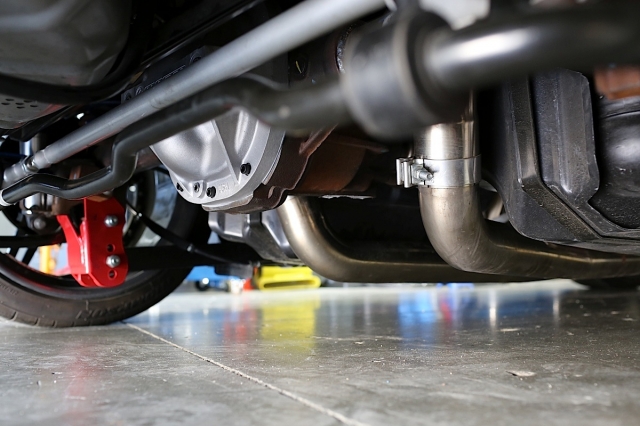
With Silver Bullet back on the ground, we’re ready to hit the track with a better performing rearend that will also pass tech inspection.
With Silver Bullet back in rolling condition, we took the car out for a quick spin. Driving around town you’d never know this was a high performance rearend setup. Step on the loud pedal and the Wavetrac instantly provides power to the rear tires without any clunk, or noise. At the track we’re already confident that we’re not only safer, but that our rear differential will hold up to whatever we put to it, and that gives us more confidence than ever to continue upping our game with our 2013 Mustang GT.



